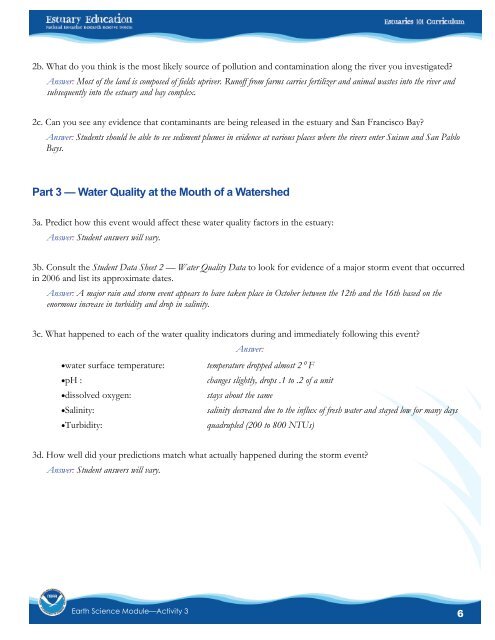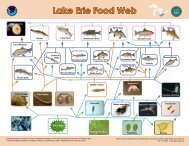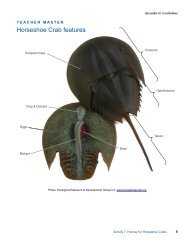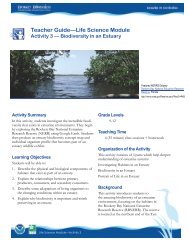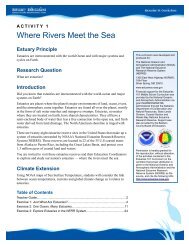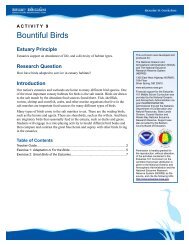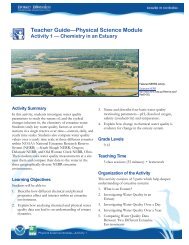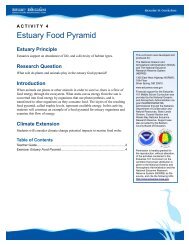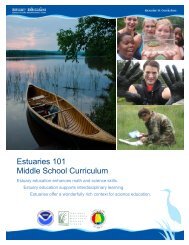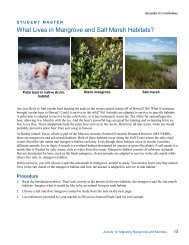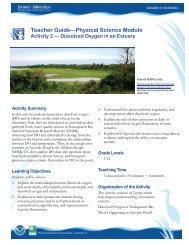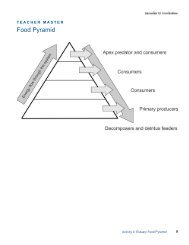Teacher GuideâEarth Science Module - Estuaries NOAA
Teacher GuideâEarth Science Module - Estuaries NOAA
Teacher GuideâEarth Science Module - Estuaries NOAA
You also want an ePaper? Increase the reach of your titles
YUMPU automatically turns print PDFs into web optimized ePapers that Google loves.
2b. What do you think is the most likely source of pollution and contamination along the river you investigated?Answer: Most of the land is composed of fields upriver. Runoff from farms carries fertilizer and animal wastes into the river andsubsequently into the estuary and bay complex.2c. Can you see any evidence that contaminants are being released in the estuary and San Francisco Bay?Answer: Students should be able to see sediment plumes in evidence at various places where the rivers enter Suisun and San PabloBays.Part 3 — Water Quality at the Mouth of a Watershed3a. Predict how this event would affect these water quality factors in the estuary:Answer: Student answers will vary.3b. Consult the Student Data Sheet 2 — Water Quality Data to look for evidence of a major storm event that occurredin 2006 and list its approximate dates.Answer: A major rain and storm event appears to have taken place in October between the 12th and the 16th based on theenormous increase in turbidity and drop in salinity.3c. What happened to each of the water quality indicators during and immediately following this event?Answer:water surface temperature: temperature dropped almost 2 FpH :changes slightly, drops .1 to .2 of a unitdissolved oxygen:stays about the sameSalinity:salinity decreased due to the influx of fresh water and stayed low for many daysTurbidity:quadrupled (200 to 800 NTUs)3d. How well did your predictions match what actually happened during the storm event?Answer: Student answers will vary.Earth <strong>Science</strong> <strong>Module</strong>—Activity 36


